When the winter rolls in, we all want to reach for foods that help fuel our bodies now more than ever. In contrast, winter tends to bring about less activity than summer. The drop in temperatures actually increases our metabolic needs. Unfortunately, one of the obvious downsides to the winter season is that the variety of foods we are used to during the warmer months is nowhere to be found. We are in unless you live in areas that force plants to grow regardless of the season. For the record, just like in all aspects of life, there is a reason for every season, and it is important to eat seasonally.
The Reason For The Season
Did you know that each season brings with it a different selection of fruits and vegetables? Each of these foods actually helps us reap each season’s benefits. For example, during the winter months foods, are higher in complex carbs and fiber. This is due to the fact that food was harder to find during winter months and, as such, had to keep you feeling full longer. When we choose to eat seasonally, it allows our bodies to go through similar changes that our environment experiences during each season. These foods are actually high concentrations of the vitamins and minerals we need to get through each season with an added advantage. For example, winter foods are high in vitamin C and zinc to keep your immune system up. In comparison, each of the winter months has its own star players. The following are my favorite top five vegetables available in February.
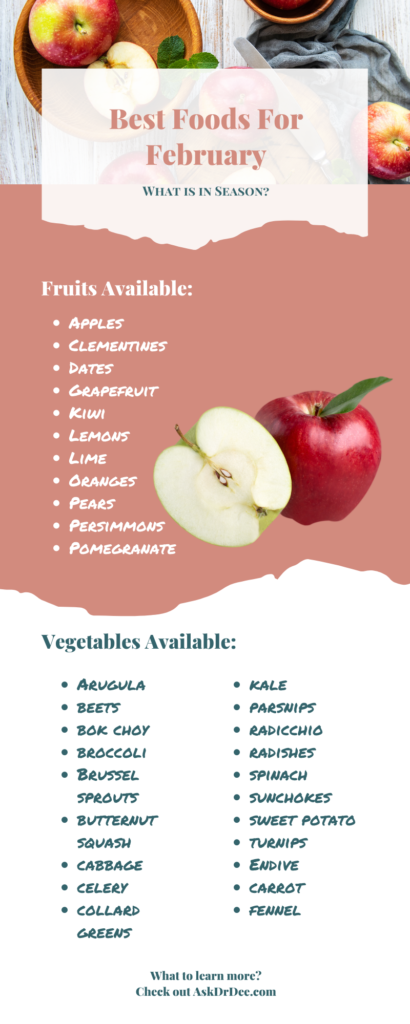
Kind Kale
Kale contains fiber, antioxidants, calcium, vitamins C and K, iron, and a wide range of other nutrients that can help prevent various health problems. Antioxidants help the body remove unwanted toxins that result from natural processes and environmental pressures. These toxins, known as free radicals, are unstable molecules. Too much build-up in the body can lead to cell damage. This may result in health problems such as inflammation and diseases. Experts believe that free radicals may play a role in the development of cancer, for example. Kale is a rich source of vitamin K, which contributes to blood clotting. This could interfere with the activity of blood thinners, such as warfarin (Coumadin).
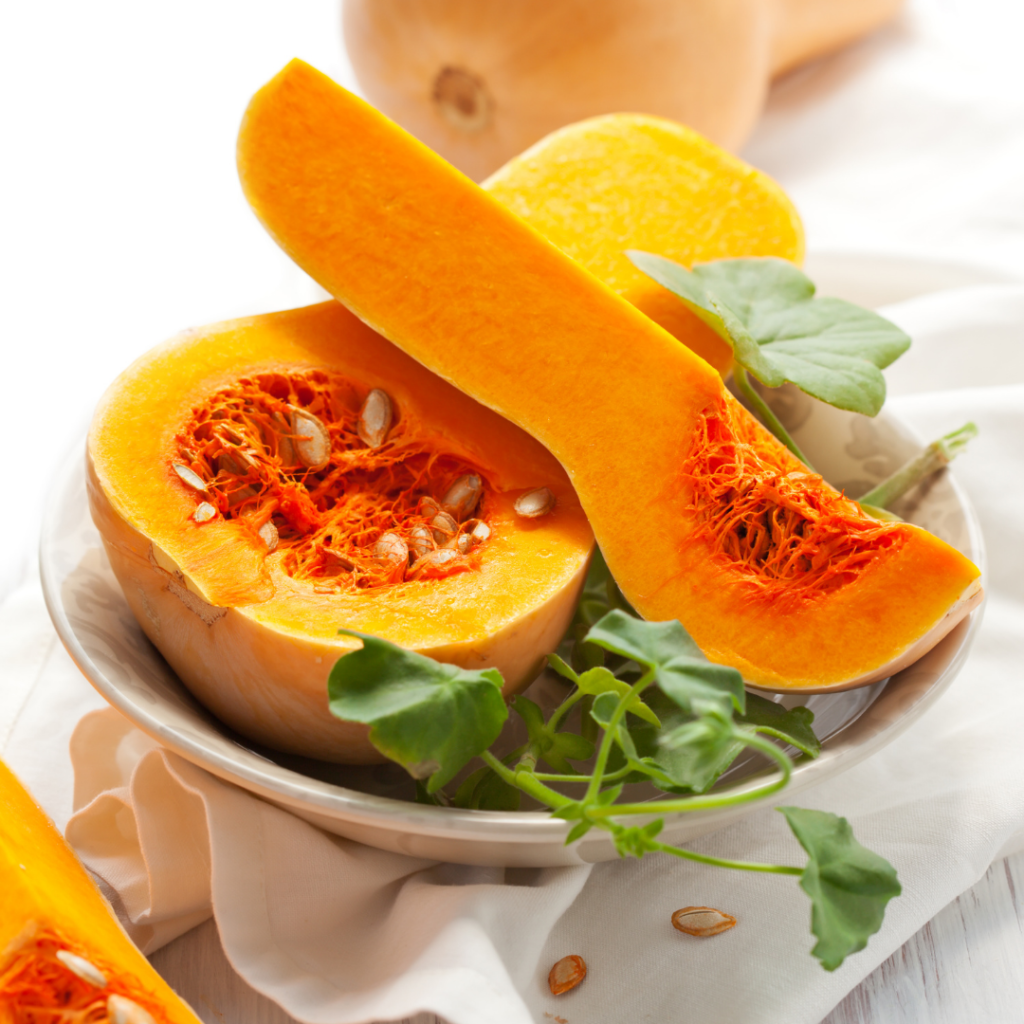
Beautiful Butternut Squash
Butternut squash is nutrient-dense and healthy food for the majority of us. However, those medicated with beta-blockers or ACE inhibitors may be advised to minimize their intake of potassium-rich foods, including butternut squash. Research has shown that phytonutrients, such as zeaxanthin and lutein, may help to protect eye health, and butternut squash contains both of these carotenoids. Beta-carotene, which we convert to vitamin A, also plays a role in eye health and healthy cell renewal, and diets that are high in brightly colored fruits and vegetables, including butternut squash, are rich sources. Beta-carotene also helps to support the natural function of the immune system, along with vitamin A, which can help to prevent infections.
Just 100g of butternut squash (baked) contains around 2g of fiber, which is 7% of the recommended intake of fiber for adults. There is strong evidence that fiber is associated with a reduced risk of heart disease, bowel cancer, and type 2 diabetes, but it can also help digestion and prevent constipation. Butternut squash is low in calories, high in fiber, and has a comforting sweet flavor which may help manage appetite.
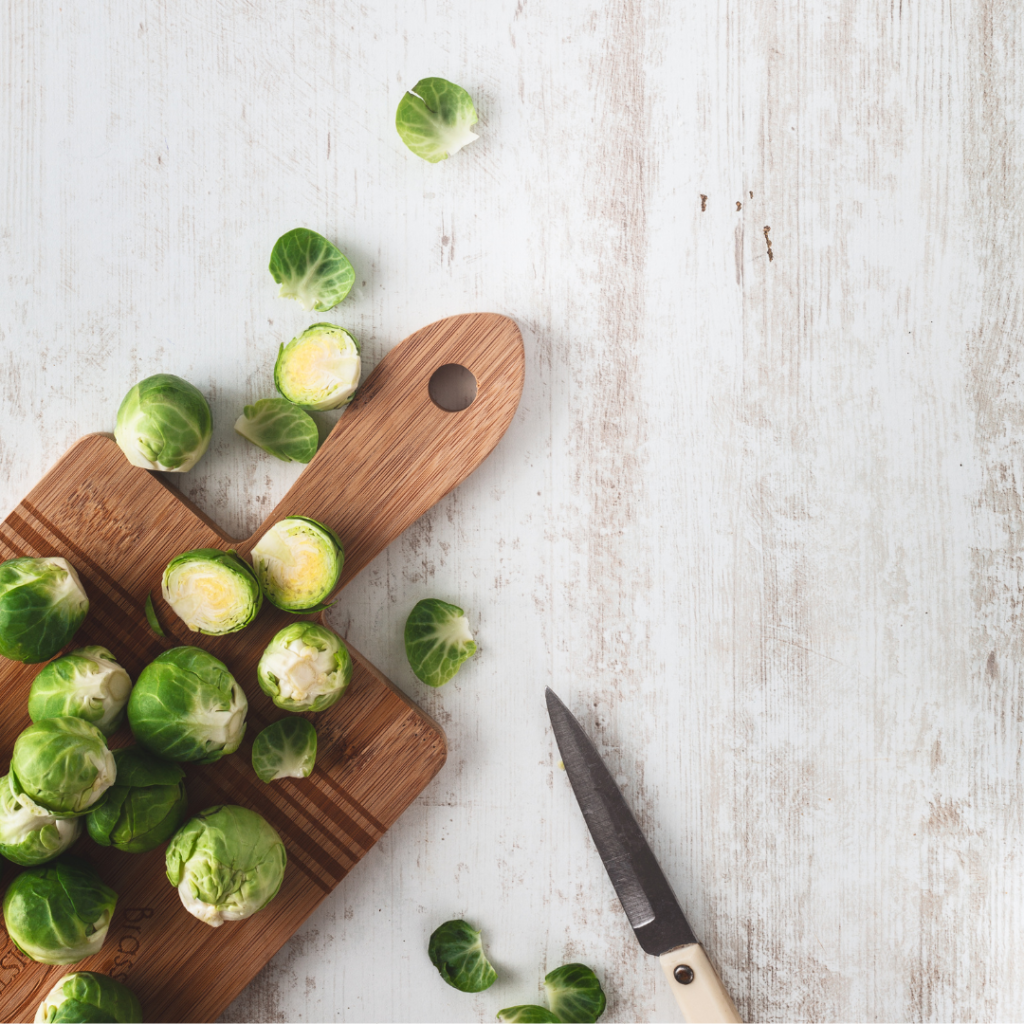
Bountiful Brussels Sprouts
Brussels sprouts are low in calories but high in many nutrients, especially fiber, vitamin K, and vitamin C. They are high in antioxidants. This helps prevent cell damage in your body. Just 1/2 cup of cooked Brussels sprouts contains 2 grams of fiber. Studies show that dietary fiber can relieve constipation by increasing stool frequency and softening stool consistency to ease the passage. Current guidelines suggest consuming 14 grams of fiber for every 1,000 calories eaten each day. For example, a person who needs 2,000 calories a day should eat 28 grams of fiber. Brussels sprouts are high in vitamin K, a nutrient important for blood clotting and bone metabolism. The fiber in Brussels sprouts may help keep your blood sugar levels stable.
Brussels sprouts are a good source of ALA omega-3 fatty acids, which may play a role in the health of your brain, heart, immune system, and other parts of your body. Inflammation is a normal immune response, but chronic inflammation can contribute to diseases such as cancer, diabetes, and heart disease. Brussels sprouts are high in antioxidants and contain compounds that may help decrease inflammation. Brussels sprouts provide 48 mg of vitamin C in every cooked 1/2 cup. Vitamin C can also increase your absorption of non-heme iron, a form of iron found in plant foods. Your body cannot absorb this type of iron as easily as the iron found in animal sources. Brussels sprouts are high in vitamin C, an antioxidant that’s important for immune health, iron absorption, collagen production, and the growth and repair of tissues.
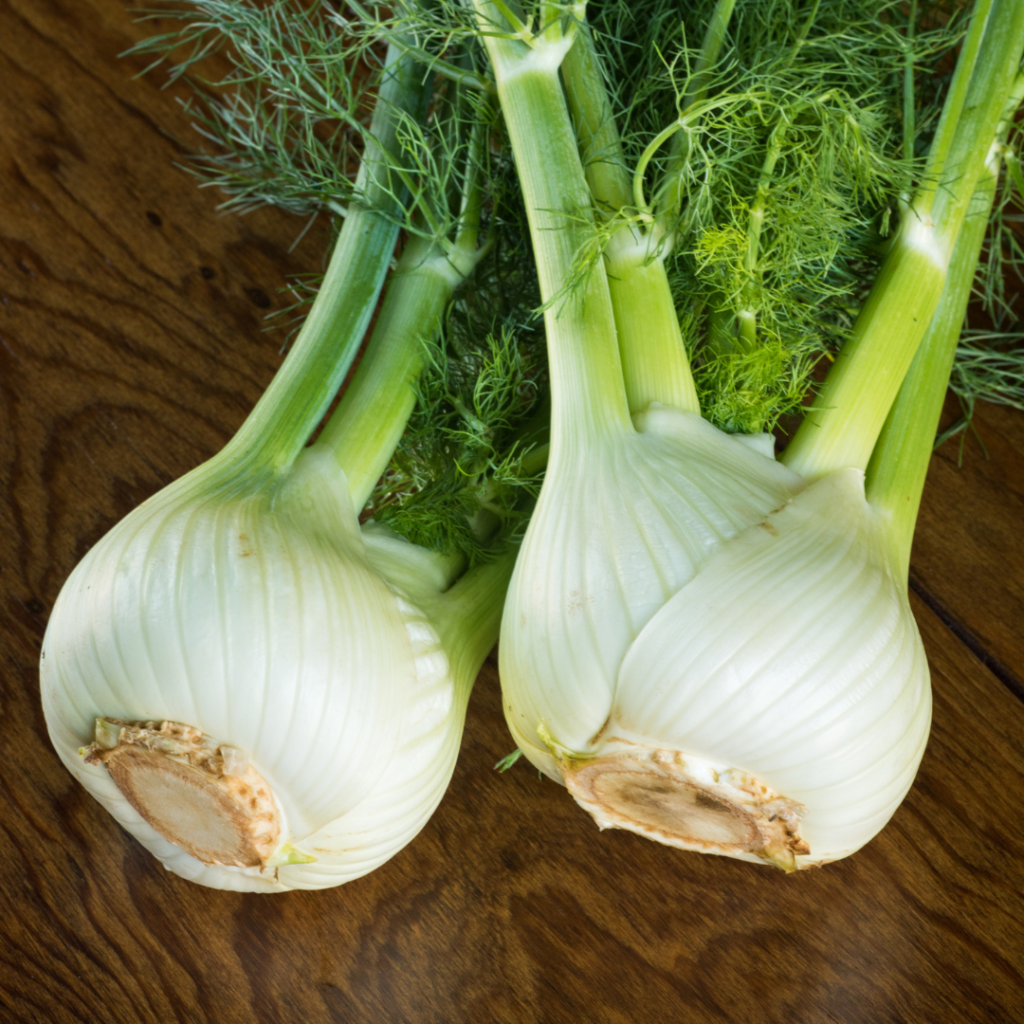
Fabulous Fennel
Fresh fennel bulb is a good source of vitamin C, a water-soluble vitamin critical for immune health, tissue repair, and collagen synthesis. Vitamin C also acts as a potent antioxidant in your body, protecting against cellular damage caused by unstable molecules called free radicals. Both the bulb and seeds contain the mineral manganese, which is important for enzyme activation, metabolism, cellular protection, bone development, blood sugar regulation, and wound healing. Perhaps the most impressive benefits of fennel and fennel seeds come from the antioxidants and potent plant compounds they contain. Essential oil of the plant has been shown to contain more than 87 volatile compounds, including the polyphenol antioxidants rosmarinic acid, chlorogenic acid, quercetin, and apigenin. Studies suggest that people who follow diets rich in these antioxidants have a lower risk of chronic conditions like heart disease, obesity, cancer, neurological diseases, and type 2 diabetes.
Fennel and its seeds also contain nutrients like magnesium, potassium, and calcium, which play important roles in keeping your heart healthy. They have antibacterial properties and may improve mental health, relieve menopausal symptoms, and reduce inflammation. Still, it’s unlikely that fennel or its seeds would offer the same effects when eaten in small amounts. Although eating fennel and its seeds is likely safe, consuming higher doses in supplement form may react with certain medications and is unsafe for pregnant women. Both the flavorful, crunchy bulb and aromatic seeds of the fennel plant are highly nutritious and may offer an abundance of impressive health benefits.
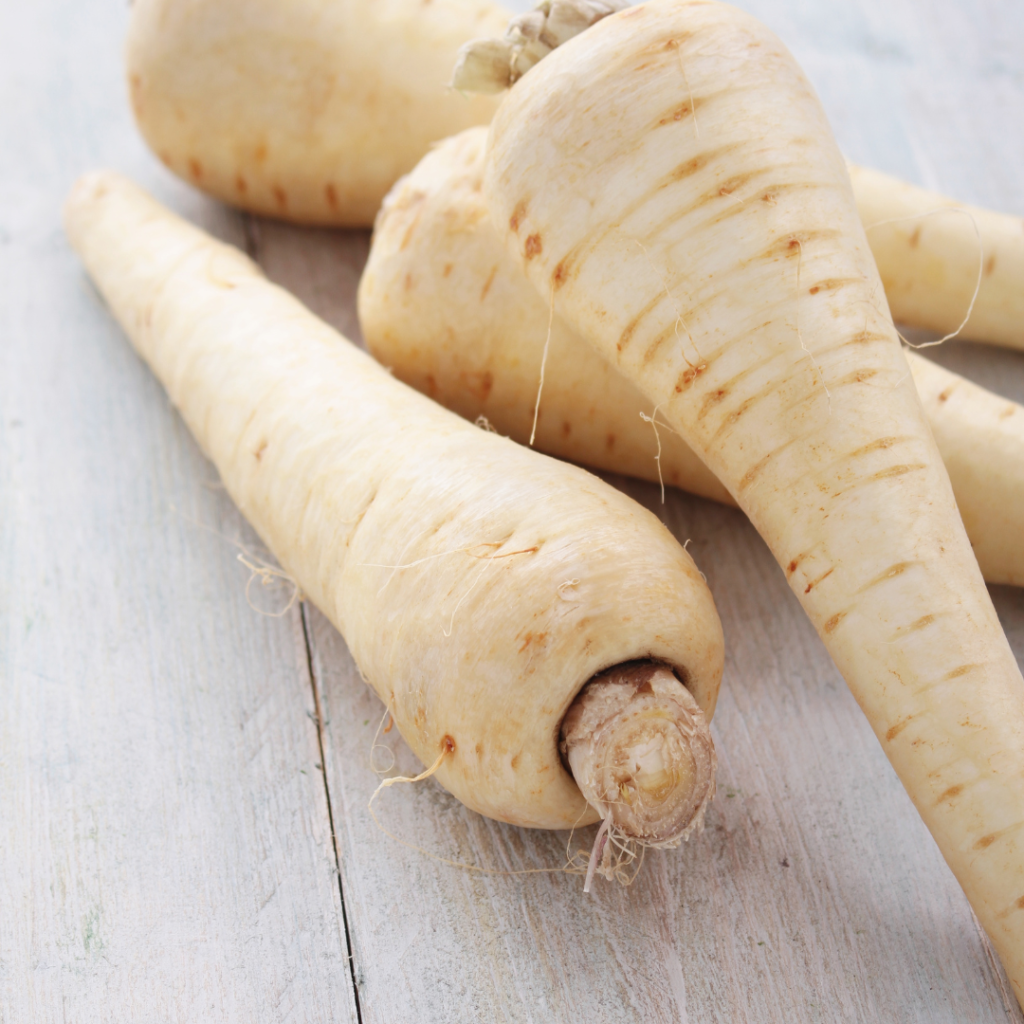
Perfect Parsnips
Parsnips are a great source of fiber, vitamin C, vitamin K, folate, and other important micronutrients. They are high in antioxidants, including vitamin C and polyacetylenes, that may prevent oxidative stress and chronic conditions like cancer, diabetes, and heart disease. Parsnips are high in fiber, which can support regularity, improve your digestive health, regulate blood sugar levels, and enhance heart health. They are high in vitamin C and antioxidants, both of which may enhance your immune function and optimize health.
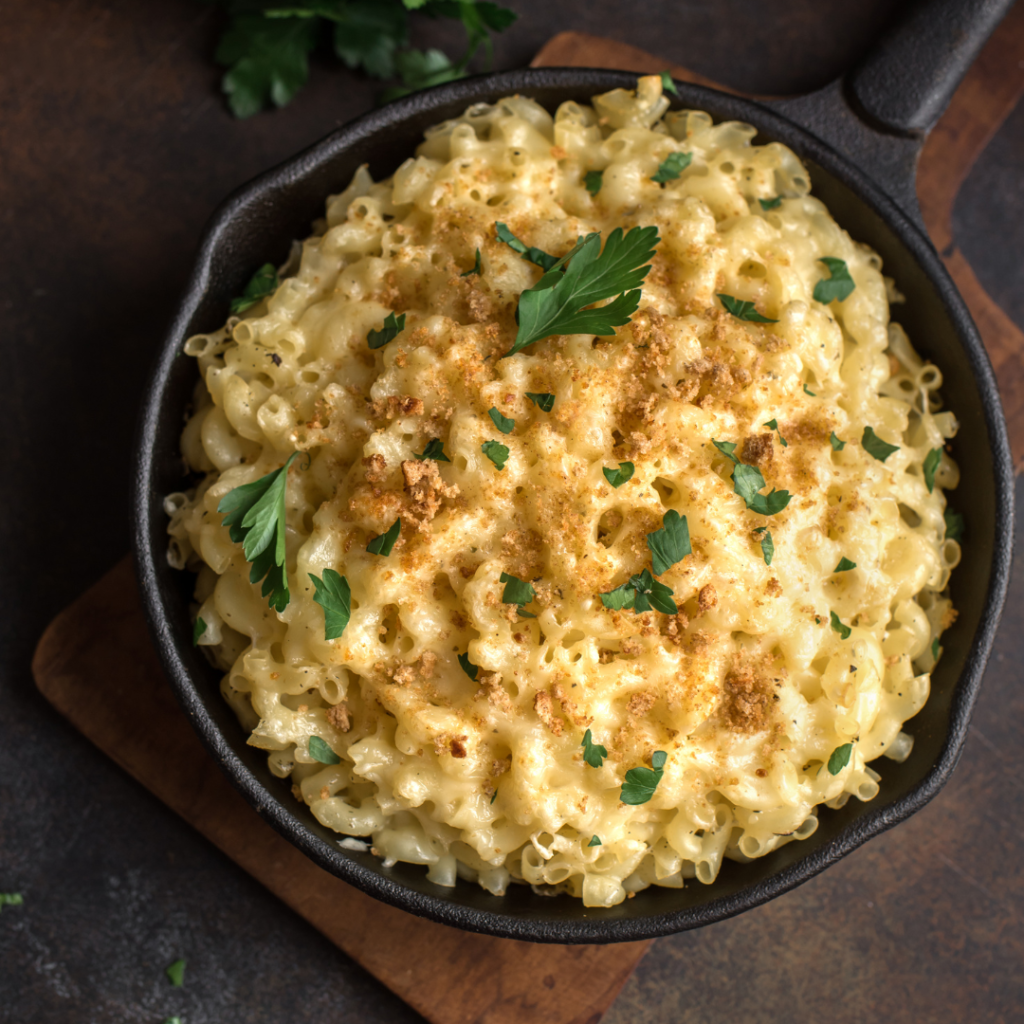
Kale Mac & Cheese
Gluten-Free, Vegan, Serves 4
- 1 Tbsp olive oil
- 3/4 cup kale shredded
- cayenne pepper to taste
- 1 white onion minced
- 2 cloves garlic minced
- 3 cups gluten-free pasta
- 1 Tbsp vegetable bullion paste
- 1/2 tsp mustard powder
- 1 cup coconut milk full-fat
- 3/4 cup coconut greek yogurt
- 1/4 cup arrowroot starch mixed with 3 Tbsp water
- 1 cup vegan sharp cheddar cheese grated
Directions:
Preheat the oven to 350 degrees F. Heat the oil in a large cast-iron skillet over medium heat. Cook the onion and kale for 8 minutes, adding a splash of water to prevent it from sticking. Stir in the garlic and cayenne for the last minute. Set aside. Cook the pasta as directed on the packaging and drain. Pour the milk into a large saucepan, bring to a boil, reduce to a simmer and stir in the starch water mixture. Heat for 1-2 minutes until thickened, then remove from the heat. Stir in the cheese and mustard into the milk mixture until melted. Once melted, add the yogurt and season to taste. Toss the pasta and vegetables in the cheese sauce until evenly coated. Transfer to an oven-safe dish, top with more cheese, and bake for 20 minutes or until golden brown.
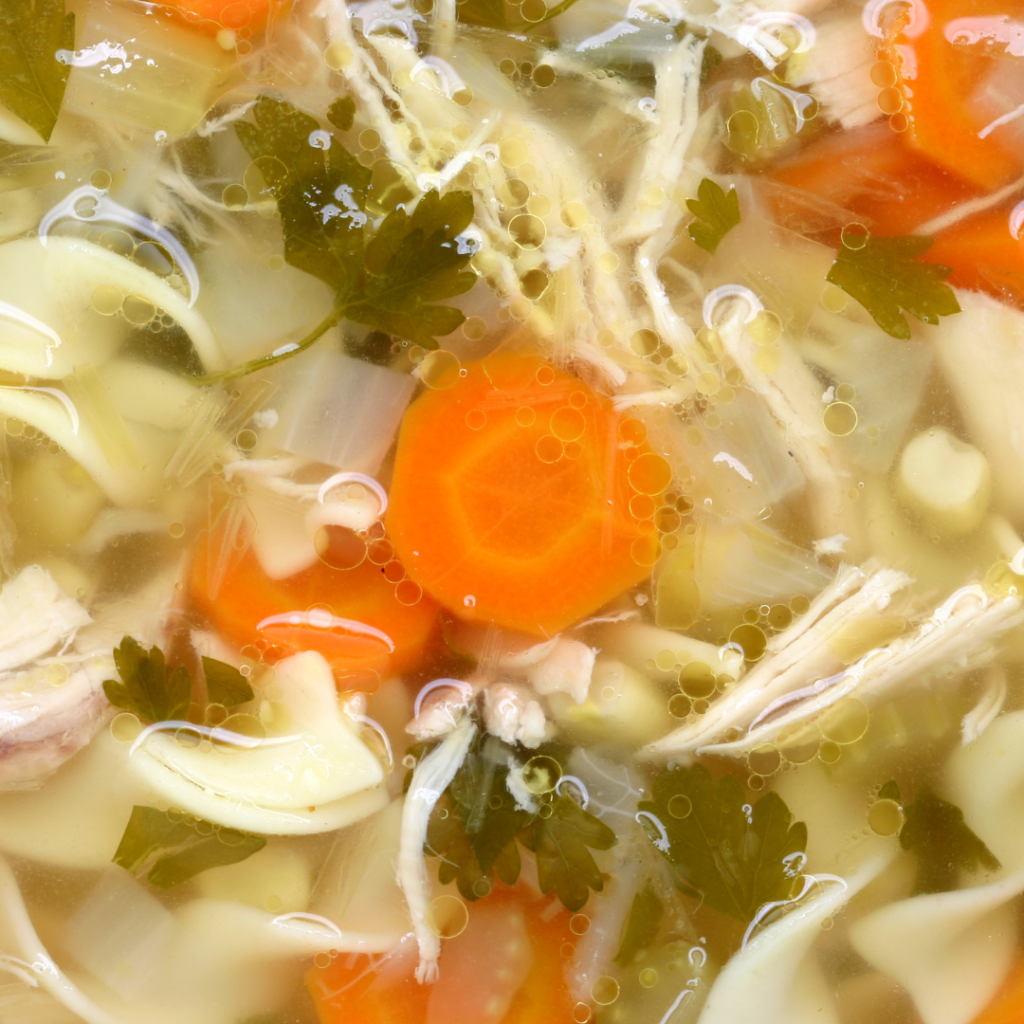
Chicken Noodle Soup
Gluten-Free, Dairy-Free, Serves 6
- 2 Tbsp olive oil
- 1 yellow onion minced
- 2 Tbsp vegan butter
- 4 cloves garlic minced
- 2 shallots minced
- 6 carrots sliced
- 4 ribs celery sliced
- 1 Tbsp fresh sage chopped
- 2 Tbsp fresh thyme leaves
- 1 Tbsp fresh rosemary chopped
- 1/3 cup dry sherry
- 1 bay leaf
- 8 cups low sodium chicken broth
- 1 pound boneless chicken breasts
- 2-3 cups egg noodles
- 1/3 cup vegan parmesan cheese
- 1/4 cup parsley chopped
Directions:
Melt olive oil and butter in a large dutch oven over medium heat. Add in the onions and cook for 2-3 minutes. Next, add the garlic, shallots, celery, carrots, thyme, sage, and rosemary. Season with salt and pepper to taste. Cook for an additional 5 minutes. Add the sherry and broth. Bring to a boil over high heat. Stir in the chicken and bay leaf. Cover and cook for 20 minutes, until the chicken is cooked through. Simmer on low for up to 4-6 hours. Shred the chicken and removed the bay leaf. Taste and add additional seasoning as needed. Bring back to a boil, add the noodles and cook an additional 6-8 minutes, or until soft. Stir in parmesan and parsley.
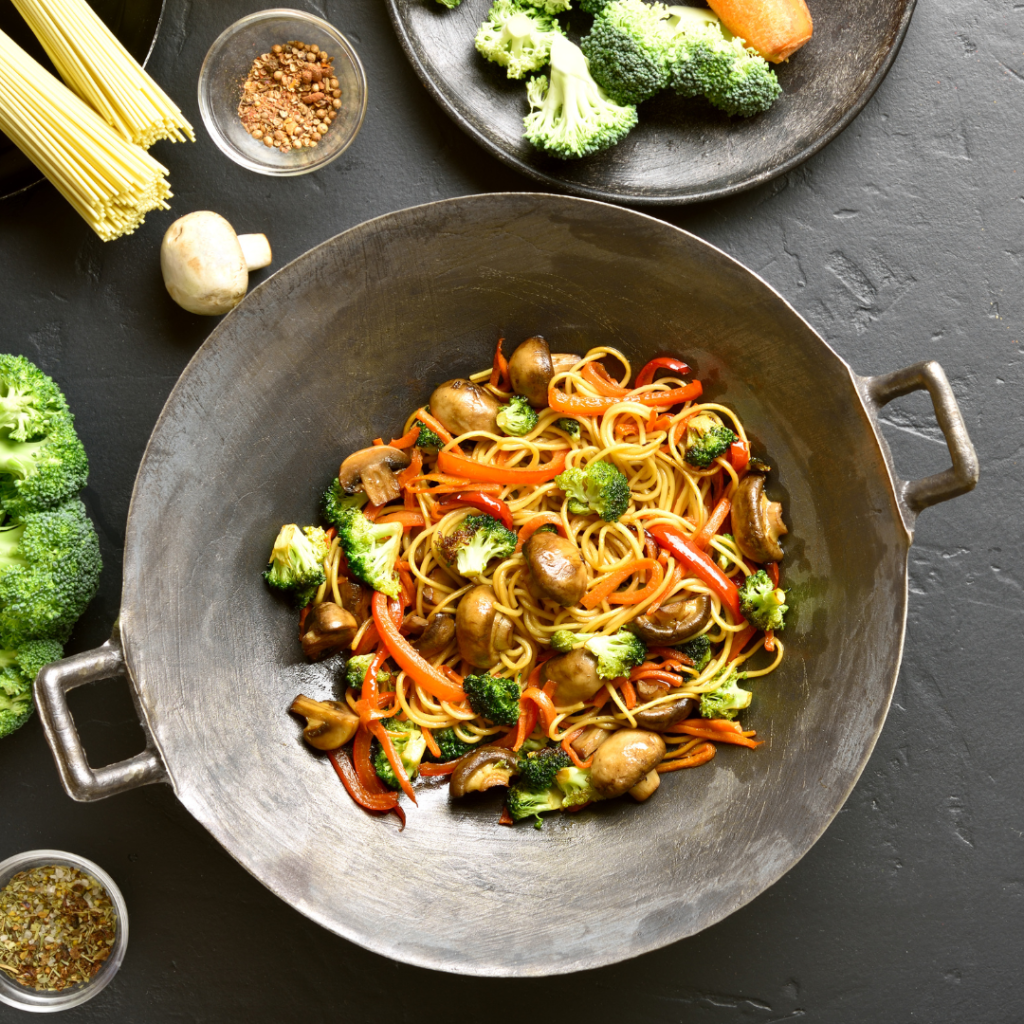
Stir-fry Udon
Gluten-Free, Vegan, Serves 4
- 2 Tbsp olive oil
- 4 cups green cabbage coarsely chopped
- 2 carrots coarsely chopped
- 14 ounces Gluten-Free udon noodles
- 2 tsp sesame seed oil
- 5 scallions coarsely chopped
- 2 tsp fresh ginger grated
- 1 tsp crushed red pepper flakes
- 1/3 cup mirin
- 1 Tbsp toasted sesame seeds
- 1/3 cup coconut amino
- 8 ounces mushrooms
Directions:
Heat 1 Tbsp oil in a large skillet over medium-high heat. Add cabbage and carrots. Cook often tossing until edges start to brown, about 4-5 minutes. Reduce heat and continue to cook for another 5 minutes. Cook the udon noodles as directed on the package and drain. Transfer the noodles to a bowl and toss them with sesame oil. Add the cabbage to the bowl. Wipe out the skillet. Heat 1 Tbsp oil over medium heat and add the mushrooms and brown. Add the scallions, ginger, and red pepper. Brown for another minute, add the udon mixture, mirin, and amino, and cook, tossing constantly. Remove from the heat and fold in 1 Tbsp sesame seeds.
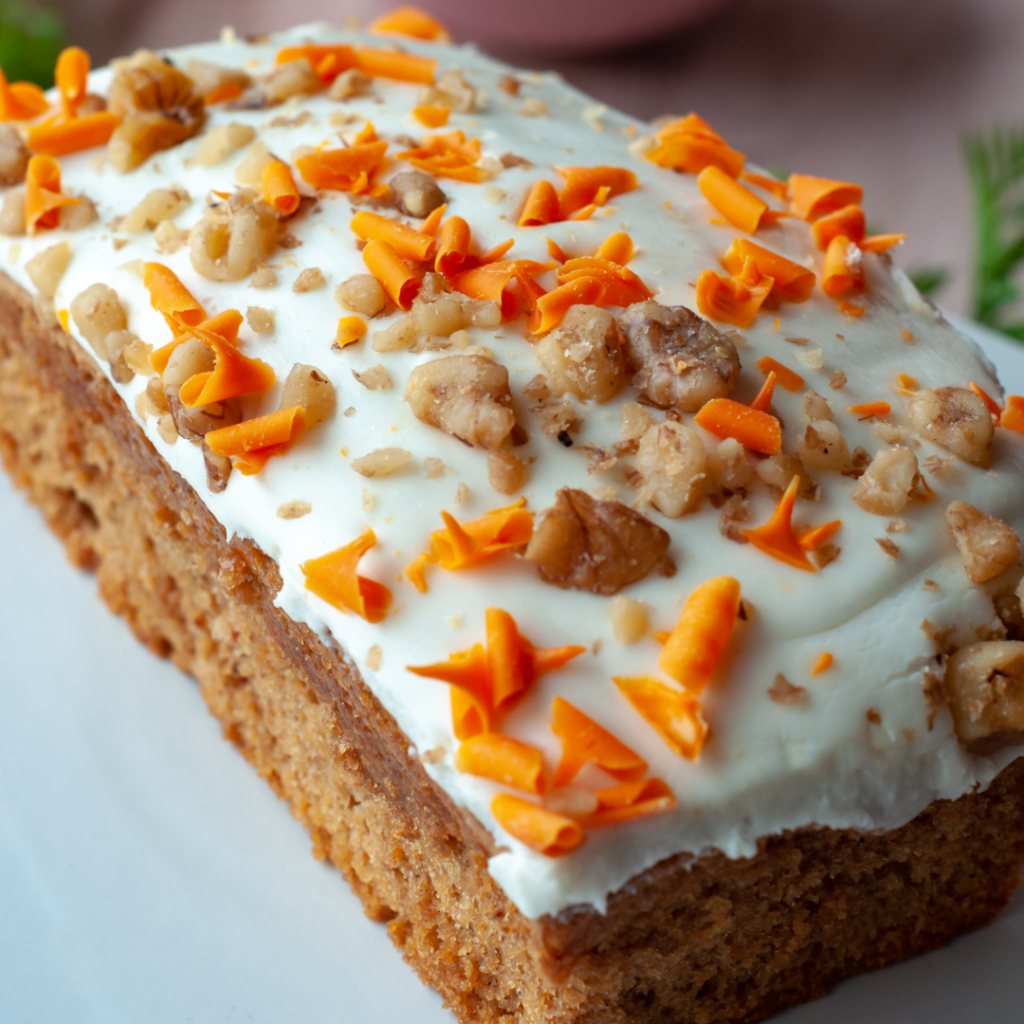
Carrot Apple Bread
Gluten-Free, Vegan, Serves 10
- 1/4 cup cinnamon applesauce
- 1/2 cup date sugar packed
- 1/3 cup raw coconut oil melted
- 1/4 cup coconut sugar
- 2 tsp pure vanilla
- 1/4 cup coconut greek yogurt
- 2 tsp cinnamon
- 1/2 tsp ground nutmeg
- 1 cup coconut flour
- 1/2 tsp baking powder
- 3/4 cup carrot grated
- 1/2 cup almond flour
- 3/4 cup apple grated
- 1/2 tsp baking soda
- salt to taste
Direction:
Preheat the oven to 350 degrees F. Pretreat a 9×5 inch bread pan with a non-stick option of choice. In a large bowl, combine the applesauce, sugars, oil, yogurt, vanilla, cinnamon, and nutmeg. Whisk until combined. Add the flour, baking powder, baking soda, and salt. Fold with a spatula until just combined, don’t over-mix it! Add the carrots and apples, making sure to fold them in until just combined gently. Pour the batter into the pan and bake for 45-50 minutes or until the top is golden and a toothpick comes out clean. Allow cooling in the pan for 15 minutes before turning it out onto a wire rack and letting it cool completely. Feel free to top with a vegan cream cheese frosting or eat it as it is.
Get Started Today
Keeping your body free of toxins and free radicals is necessary to maintain a healthy life and a healthy mind. You can add tons of foods to your regular diet to help your body with its critical detoxifying processes. If you are looking for a safe and all-natural way to detox your body at home, be sure to check out my Balancing Abundance Program. Because detoxing is so important and realistically, everyone should be doing it on at least a seasonal basis, I have put together a program to help you do just that. Here’s the thing, I know working with me one-on-one can seem difficult to get into (due to limited space), and I wanted to be able to give everyone an additional solution that has no limits. You deserve to be happy, healthy, and successful at everything you do, so here are some recipes to help set you up for success!

Need A Hand?
A happy and healthy life is closer than you may think. We all have to deal with our health daily, and it shows when we don’t feel our best. If you are tired of just making it through your day, you NEED to start investing in your health today! You are not alone on this journey. If you need help, I am always here to do that. Even if it is something as small as acting as a sounding board, do you have any questions or concerns I can help you with? Feel free to contact me directly at [email protected] or book a one-on-one call with me. Be sure to subscribe to gain access to tons of free goodies and check back daily for more great recipes and information!

